Rosa Gallardo, TAV Arquitectos
María Esther Cocho
Architects
Based on their own experience and some examples, in this article the authors attempt to explain very briefly the method and substance of loss adjusting for listed buildings classified as BICs (Bienes de Interés Cultural – Cultural Heritage Assets) in Spain and other exceptional heritage buildings that do not enjoy that classification yet nonetheless are part of a city's or town's heritage and identity after they have been damaged by an extraordinary event covered by Consorcio de Compensación de Seguros (CCS).
![Figure 1. Photograph of the interior of the Espolón Tower [Tower on the Spur] of the Castle in Lorca after the 2011 earthquake.](../../../../almacen/numero17/peritar_BIC_01.jpg)
Figure 1 (1). Photograph of the interior of the Espolón Tower [Tower on the Spur] of the Castle in Lorca after the 2011 earthquake.
Assets that are part of Spain's cultural heritage include real and movable property that benefits from some sort of protection. There are three levels of protection according to the importance of the asset (2) namely, from least to most:
BIC buildings may be classified as monuments, historical gardens, historical complexes, historical sites, and archaeological areas.
The different stages of the process of loss adjusting for historical heritage buildings is similar in form to adjusting for any other type of risk (such as an industrial asset, civil works, apartment blocks, or a business's privately owned personal property), but the substance of the process differs for a variety of reasons. Some of these reasons are the special vulnerability of certain of these assets, their sizeable economic value, not to mention their uninsurable intangible historic or cultural value, and the meaning they have for the city or town where they are located, bringing them wide public interest and publicity. Another major difference in this type of loss adjusting is how to go about making repairs, which should not alter the building's structural or construction systems or traditional materials and building methods.
Our experience with BICs basically concerns religious monument sites, inasmuch as the documentary, monumental, artistic, historic, and cultural heritage of the Catholic Church is an essential component of Spain's cultural heritage because of its importance, size, and diverse nature: churches large and small (from hermitages to cathedrals), monasteries, convents, bishop's palaces, etc.
All these buildings are several centuries old with special typologies, structures, and building methods and materials. They share these traits with other buildings referred to as "exceptional historic buildings", which, even if unlisted, are part of the cultural heritage and identity of a group of people, for example, a village church, a theatre, or even a residence where a historical or cultural figure was born or worked. We have also included the example of a case like that to broaden our perspective.
Fortunately, the list of examples of assets of this kind that have suffered major damage caused by extraordinary risks is not very large (3), both because of the small number of these properties in comparison to the number of other risks and because of the sturdy nature of most buildings of this type, which have come down to our times notwithstanding their extensive exposure to the effects of time, during which they have suffered deterioration as a result of the passage of the years or a range of different causes.
CCS covers a range of perils that include a number of extraordinary events, but here we will focus on earthquakes and floods, two of the most common sources of claims.
Loss adjustment tasks, in order to assess the indemnification to be paid to the policyholders by CCS, according to their extraordinary risks insurance, are normally divided in the following four stages:
Down below, we will detail the traits of these stages in the scope of BICs.
In all cases loss adjusting starts with CCS's engaging one or more independent technicians who specialise both in insurance and in the field concerned.
We always look at the chance to inspect a cultural or historical asset as an opportunity that holds out special interest both from an architectural standpoint by enabling us to examine and monitor damage and repairs in these important buildings with technical building features unlike those in use today and from a personal standpoint by allowing us access to buildings or to parts of buildings ordinarily off limits to the general public.
At the same time, it is also a great responsibility, since damage to BICs usually gives rise to much expectation and typically has an impact on a large number of people.
As we will see later, when the assignment and its acceptation by the CCS associate adjuster is possible, they are made even before the policyholder formally files the loss claim, informing about the damages.
This stage takes more time and demands special care and attention in the case of BICs and exceptional buildings. Firstly, in terms of structural typology, these buildings tend to be very large and out of the ordinary. For example, load-bearing walls with buttresses, stone column grids with lintels or arches and vault and dome systems that must be checked in case there is a problem with their stability. They are made of materials, often hidden from view, like stone, brick, adobe, and wood that need to be uncovered so they can be checked, faced with traditional aggregates like lime plaster or wooden plinths and cornices whose dimensions – height, width, and thickness – must all be measured.
On top of this, data must be collected on other decorative elements like grillwork, woodwork, and stained-glass windows.
To make the best possible use of inspection visits that can be hard to arrange, it is a good idea to compile information on the building in advance, something that can be done in view of the large amount of information that exists on these historical and cultural heritage buildings, not only in the specialised literature but also on the Internet. In addition, since exceptional buildings are involved, the mass media carry a multitude of news items, including photographs that can furnish substantial amounts of information about the risk and the loss.
For instance, the location of the building, its surroundings, floor plans, elevation views, volumetric information, all this can be very helpful in anticipating the type of damage that may be encountered and where it may be found.
This is meaningful because on an unprepared visit we can be overwhelmed by a glut of data or be influenced only by what our guide decides to show us (for instance, the most conspicuous damages, that not necessarily are the most severe ones), without having a chance to inspect other potentially important aspects.
The conclusions of this preliminary assessment will depend on the type of event. For instance, if there has been an earthquake, damage will be located mainly in the upper parts of a building (vaults, arches, lintels) and in special features (belfries, towers, pinnacles, and ornamentation), whereas if there has been a flood, the damage will be to the lower parts (floors, plinths, woodwork) and even decorative elements and movable property (rugs, paintings, furniture, statues, etc.).
The first inspection visit is usually held in the company of the insured's agent and specialists the insured has designated, who are generally involved in conservation, inasmuch as the insured is fully aware of the importance of the asset, and as responsible parties they try to help us in our assessment by providing us with an expert to work with. This first inspection will be followed by many others to collect data, both before any action is taken and while repairs are in progress.
The initial tasks of making records, taking measurements, marking on plans, and photographing the damage in the claim will take more time or less time depending on the documentary information that has been collected beforehand or provided by the insured's technical staff. During the initial stage this information is scanty and more is gathered as emergency and consolidation work progresses. It is essential to have auxiliary means available to inspect hard-to-reach places, e.g., drones, cranes, and scaffolding, to enable us to inspect roofs, cornices, towers, and so forth.
One relevant safety and liability related facet of this stage of loss adjusting is alerting to any situations that pose a threat to people, the building itself, or neighbouring buildings that might come to light. Still, as a rule, emergency personnel and technical teams ordinarily take suitable measures to minimise the dangers (restricting access, cordoning off areas, dismantling unstable elements, shoring, measuring progression of the damage, etc.) right from the start.
Let us now illustrate the foregoing by discussing some examples of damage caused by earthquakes of various magnitudes.
The former Saint Patrick's Collegiate Church (Lorca, Murcia)
The city of Lorca was struck by a series of earthquakes on 11 May 2011. The strongest tremor, magnitude 5.1 Mw, Mercalli intensity scale VII (4), caused serious structural damage to 5% and moderate structural damage to 13% of the city's buildings.
The mass media quickly began to report widely on the earthquakes and the different levels of damage they caused to most of the public and residential buildings. The public buildings that were damaged included the castle, the churches of Saint Francis and Saint Matthew, the Saint Dominic monument complex, and the former Saint Patrick's Collegiate Church, all registered as listed cultural heritage sites.
CCS learned of the event from the mass media and in the interest of helping the insured without delay instructed us to adjust the claims for several of those sites, including San Patrick’s, a former collegiate church and Lorca's main church. This was done immediately after the quake, even before the bishop's office in Cartagena had submitted its claim.
This important building was built from the sixteenth to the eighteenth centuries and had been listed as an artistic and historic monument in 1941, so copious information and documents could be downloaded from the Internet right after receiving the assignment.
On the initial visit the outside was inspected, because the church was closed and walled off on account of the danger of falling building elements. We also contacted the diocese's representative for insurance matters, who helped us obtain additional information on everything that was being done by arranging inspections of the interior together with one of the technicians who was involved in the emergency work.
When we received the copy of the insurance policy, we were thus able to draw up a preliminary report with a view quickly to setting aside provisions of funds.
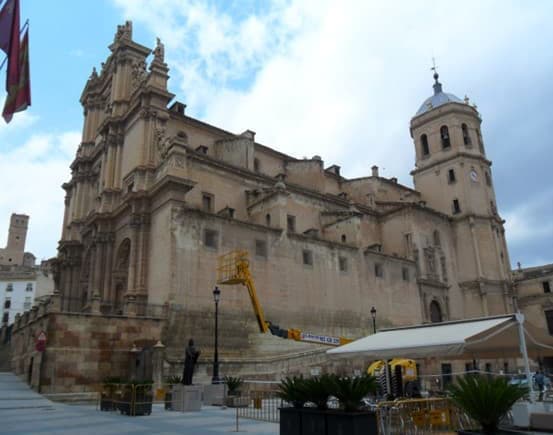
Figure 2. Photograph of the former Saint Patrick's Collegiate Church showing one of the cranes used to remove elements from the upper portions on the building that were at risk of falling.
Since the building was a severely damaged BIC, repair work was started right away. Initial emergency work removed all the elements at risk of falling with the help of cranes. The owner hired a firm that specialised in restoring (5) and renovating artistic and historical heritage to do the emergency work under the supervision of technical teams from the Ministry of Culture, the Murcia Regional Government's Office of Fine Arts and Cultural Assets, and the Lorca City Council.
For the structural analysis, areas that were hard to access were inspected using a drone, all the movable property of value was removed from inside the building and the rest protected, unstable elements were propped up, and instrumental measurements were taken to check if cracks were widening. Structural behaviour was also examined, and consolidation and restoration recommendations were made.
The work was carried out by companies that specialise in buildings of this kind.
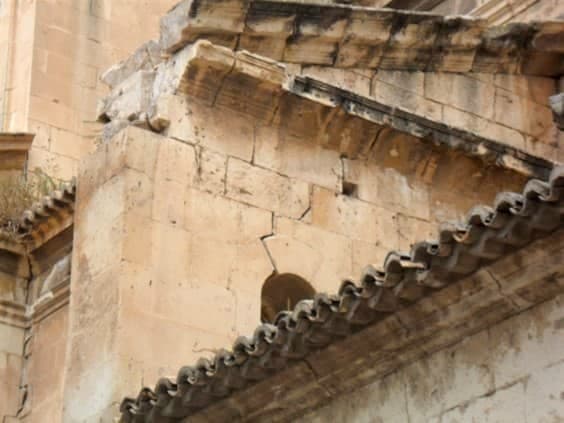
Figure 3. Photograph showing damage plainly visible from the exterior. The pinnacle on the end of the buttress and part of the cornice have collapsed. There is a crack over the arch located in the wall section of the buttress itself, and the keystone has dropped down. Plants can also be seen to be growing on the roof, an indicator of inadequate maintenance.
Parish Church of the Incarnation (Santa Fe, Granada)
A great deal of seismic activity took place in the Atarfe-Santa Fe area in Granada between December 2020 and August 2021 (known as the Granada seismic swarm). The main tremors occurred around the town of Santa Fe on 23, 26, and 28 January 2021. The maximum magnitude was 4.4 Mw and the maximum intensity V-VI in Atarfe, V in Santa Fe, and IV in the city of Granada. Damage was moderate, mostly in Atarfe and Santa Fe.
Several religious and civil buildings in the towns that were affected suffered different amounts of damage. Examples are cultural heritage assets like the Parish Church in Santa Fe, the Granada Cathedral, the Royal Chapel (Capilla Real) in Granada, and exceptional religious buildings like the Saint Anne Hermitage and the Saint Christopher Church in Atarfe.
The Parish Church of the Incarnation in Santa Fe was the religious monument that was damaged the most by this series of seismic events. However, the damage was not structural.
After receiving the assignment, we were able to compile basic data on the risk before our visit: an eighteenth-century church built in the neoclassical style, listed as a BIC in 1983. There was abundant graphic and documentary information: architectural specifications, patronage, builders, history, and pictures of the exterior and interior, plus historical records that showed that the building had gone through earlier earthquakes.
There were also details about the loss, since the mass media had quickly taken up this news story. Photojournalism reports showed debris on the ground, indicating that we would find fallen masonry cladding materials and fissures in arches and vaults.
At the time of our visit in the company of technicians from the episcopal see, safety measures had already been taken: the church was closed to the public, and the pinnacles on the façade liable to fall into the street the next time an earthquake strikes had been removed.
The condition of the building and the presence of generalised, if moderate, damage afforded an opportunity to visit the entire building, both readily accessible areas ordinarily open to the faithful and the museum and archives, which hold interesting incunables.
The damage observed was consistent with the event. However, at first it could be verified only partially, because auxiliary means of inspecting the upper portions of the building's interior up close were not available, so only more or less extensive damage was visible.
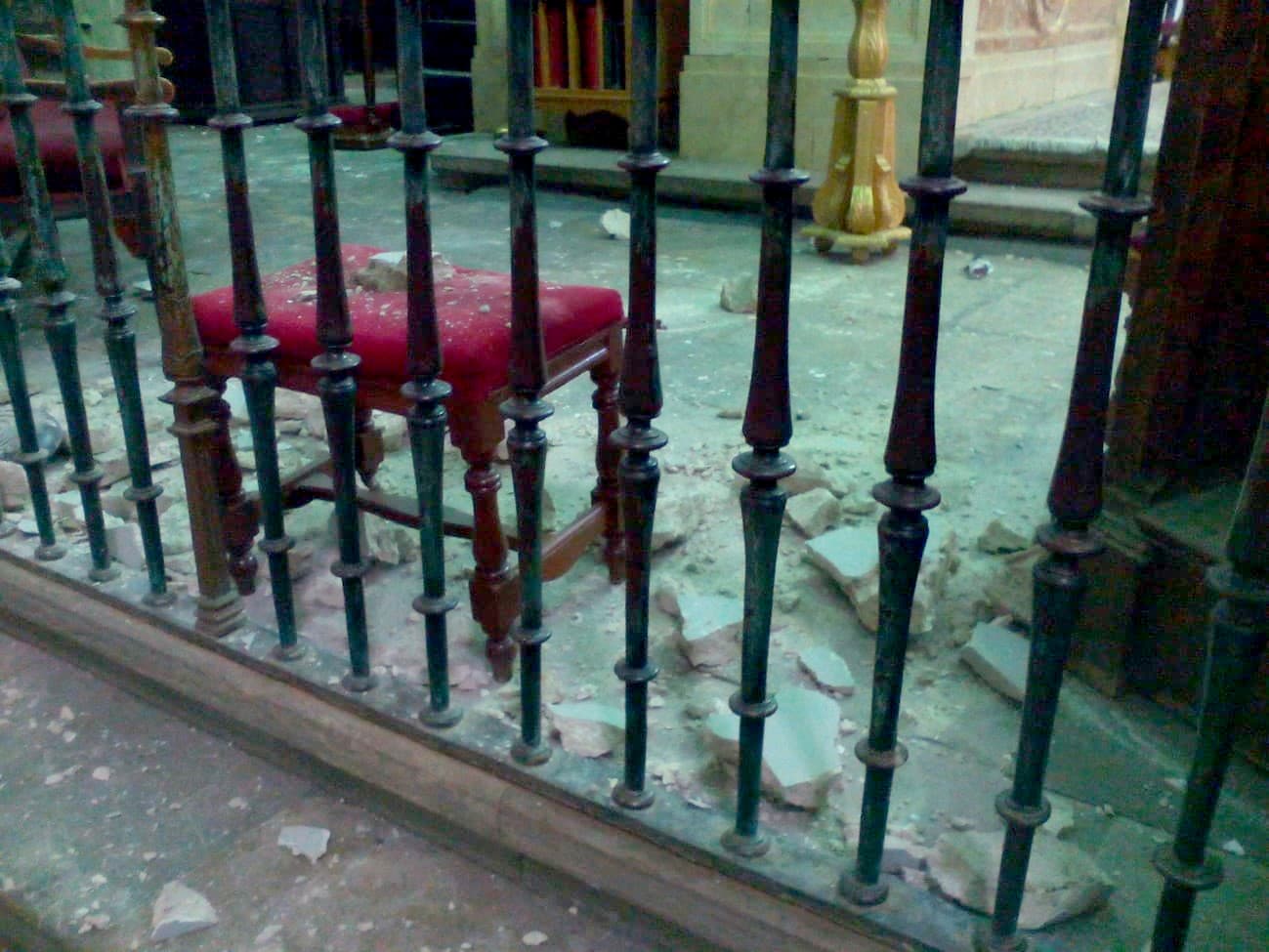
Figure 4. Fallen masonry cladding in the Santa Fe Parish Church of the Incarnation. These can be seen to be quite thick, typical for buildings of this kind.
Before making any valuation of the damage, all the data from the inspections and the insurance policy details need to be reviewed to determine the scope of the loss concerned.
Previous losses, plus age, plus the large sums of money needed to undertake certain repairs mean that these buildings may not be in an appropriate state of repair. To our mind, this is the most complicated part of our task, because what often happens is that the building's pre-existing damage is exacerbated by the current event (for instance, an incipient crack is a weak point that is opened up wider, or an element that had previously been shifted out of position or loosened is toppled). To be able to draw proper conclusions, it is essential to ascertain the condition the most vulnerable points in the building were in before.
The information compiled on the Internet can be extremely helpful in the case of historical buildings. Images on historical websites and on the websites of the monuments themselves, on Google Maps, and even in blogs dealing with the events can serve to corroborate damage that in our opinion appears to precede the loss.
The scope of the damage will also depend on the magnitude of the event and the vulnerability of the building. The design of the ground plan, regularity, the height of the structural elements, thickness, and the presence or absence of buttresses are all factors that will determine vulnerability and influence the claim resulting from the tremor, whereas claims due to flooding depend more on the location of the risk (near a river, in the low-lying part of a street) and level with respect to ground level (presence of a basement, openings at street level, etc.).
By way of example, we can look at the case of flooding of the Saint Francis’ Convent in Olite (Navarre), an exceptional, eighteenth century building with fifteenth century elements not listed as a cultural heritage building. It is located near the Cidacos River on essentially flat land in one of the most low-lying areas of the river basin. A flood in July 2019 (the water level in the river went from 15 cm to 5.13 m with a maximum flow rate of 399 m3/s) considerably affected the ground floor. Muddy water entered through doors and openings and reached a height of nearly 1.5 m inside the building.
There was damage to vertical masonry facing elements (traditional aggregates, wooden plinths), wood floors, woodwork (wooden doors and windows, stained glass windows), electrical systems, furnishings (benches, pedestals). In contrast, the walls and floors, made of stone, were only soiled.
According to information contained in Olite's 2020 Municipal Emergency Flood Risk Plan, this was not a unique event. There had been a number of major floods, e.g., in 1353, 1664, 1795, and 1943. This demonstrates the effect of location of the risk on the occurrence of losses of this kind.
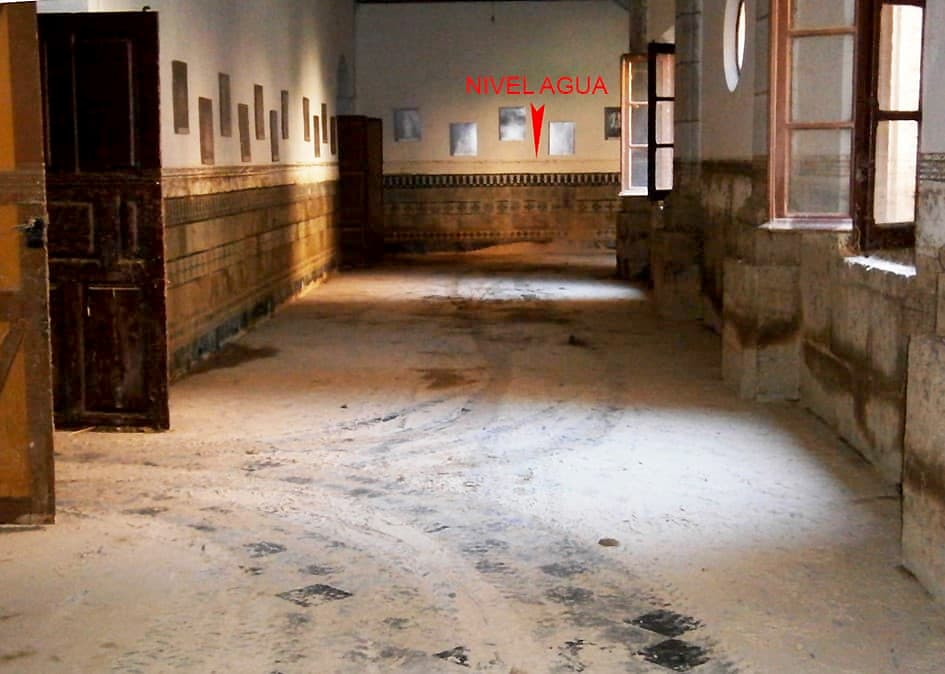
Figure 5. St. Francis’ Convent. Accumulation of mud on stone walls and floors and damage to wall cladding, paintings, and woodwork.
Coming back to the previous examples of earthquakes, the vulnerability of the building structure is a major factor, but tremor intensity is a more important factor (6).
Comparing events of differing intensities highlights the importance of intensity. An intensity VII earthquake, like the Lorca quake in 2011, produces structural damage in historical buildings with class A and B vulnerability. In contrast, intensity V tremors, like the ones in Santa Fe in 2019, cause non-structural damage basically affecting masonry veneers. Where maximum intensity is only IV (as in nearby localities such as the city of Granada), damage is virtually imperceptible and in fact results from construction defects or prior damage made visible or worsened.
Coming back to previous examples, St. Patrick’s in Lorca, struck by an intensity VII earthquake, suffered damage to structural elements (walls, buttresses, vaults, and roofs) and non-structural damage to decorative elements. This damage can be summarised as the appearance of cracks in vaults and arches discharging onto the tops of walls; separation of the vaults in the side arches of the ambulatory; large cracks in the outer and interior walls and in the compartments of the vaults; collapse of the cladding covering the ashlars in the ambulatory; descent of the keystones in nearly all the interior arches in the buttresses and toppling of pinnacles, eaves, and stone blocks of the tower, the top portions of the buttresses, and the ambulatory, in turn producing holes in the roof and in several vaults. The stability of a number of other elements (pinnacles, eaves, and stone courses) was affected, some were twisted, and others partially toppled. The construction, the structure of buttressed load-bearing gravity walls, proved to be sufficiently solid and deformable, so none of the structural components collapsed.
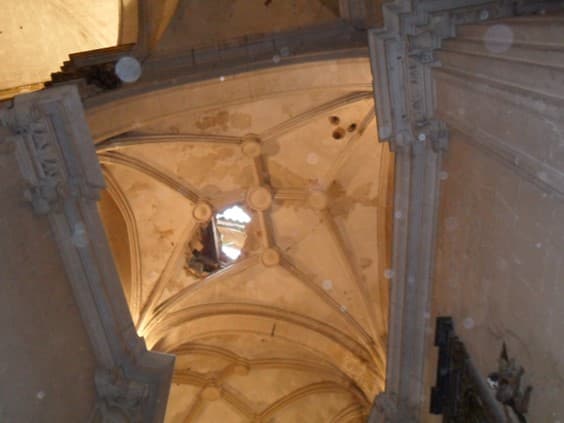
Figure 6. Former St. Patrick's Collegiate Church. Plainly visible damage in the interior. Hole in the double curvature vault.
By contrast, the damage caused to the Parish Church in Santa Fe by the maximum intensity V quake was just cracks in the veneers crossing vaults and domes running in a clear lengthwise direction; cracks in the cladding over the lintels, the keystones of the arches, and walls; cracks in between the ribs and vaults; fallen cladding; fallen mouldings from cornices; and shifting of lintel stones. Brickwork and stone pillars suffered very little damage.
As in the church in Lorca, the location and pattern of the affected areas was indicative of horizontal displacement. The defects were similar in nature but less severe.
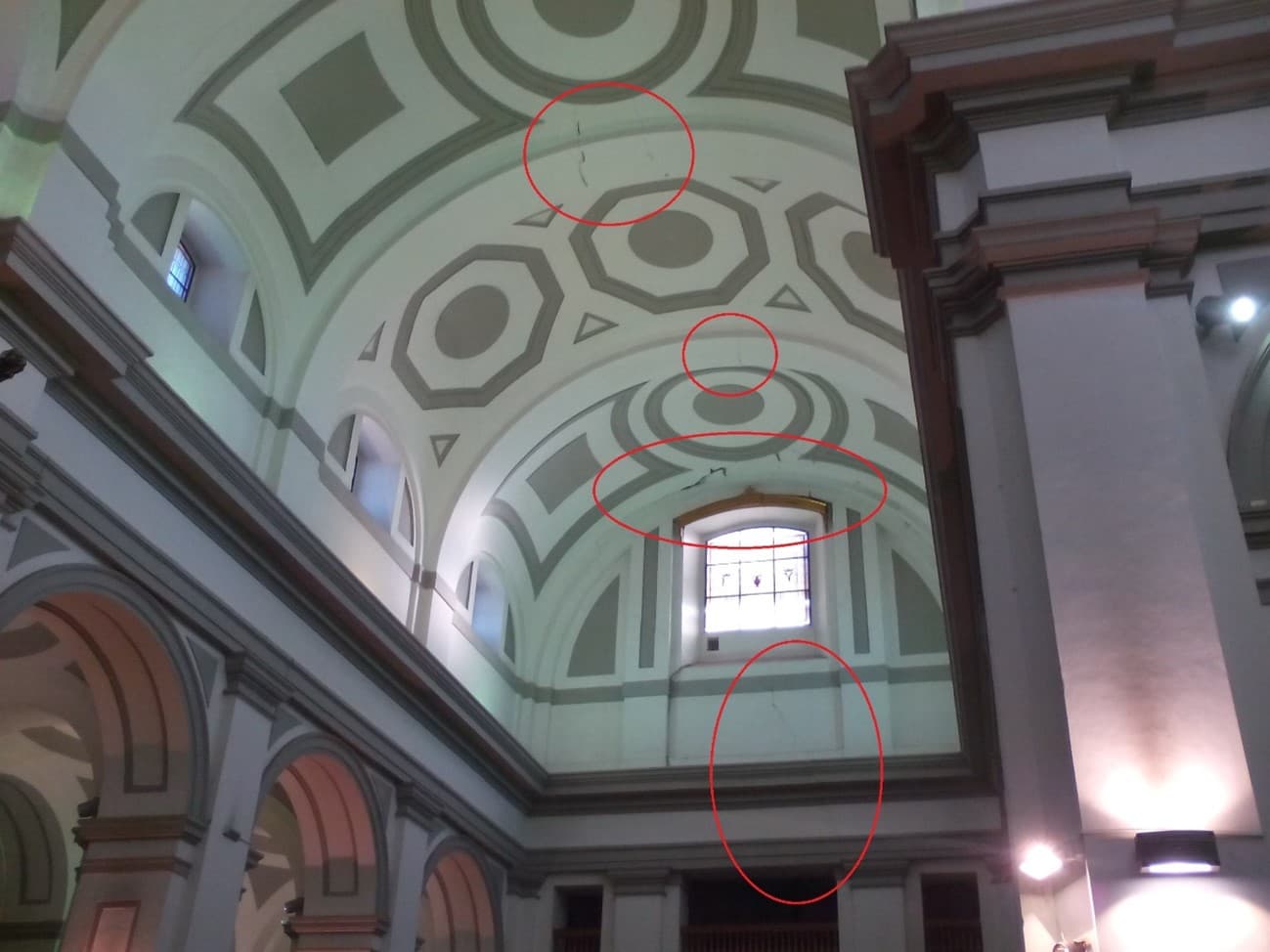
Figure 7. Parish Church of the Incarnation in Santa Fe. Longitudinal cracks in the claddings of domes, vaults, arches, and vertical walls.
Let us consider the effects of lower intensity tremors by looking at another example. In the environs of the Cathedral in Granada, the tremors had a maximum intensity of IV, which according to the EMS-98 does not result in damage. And indeed, there was no damage to architectural elements, yet even so the event was not completely without any effect at all. Stone fragments from ornamental elements on the façade affected by the ravages of time were knocked down into the street. This made it necessary to take safety measures and carry out costly emergency work to stop accidents from happening.
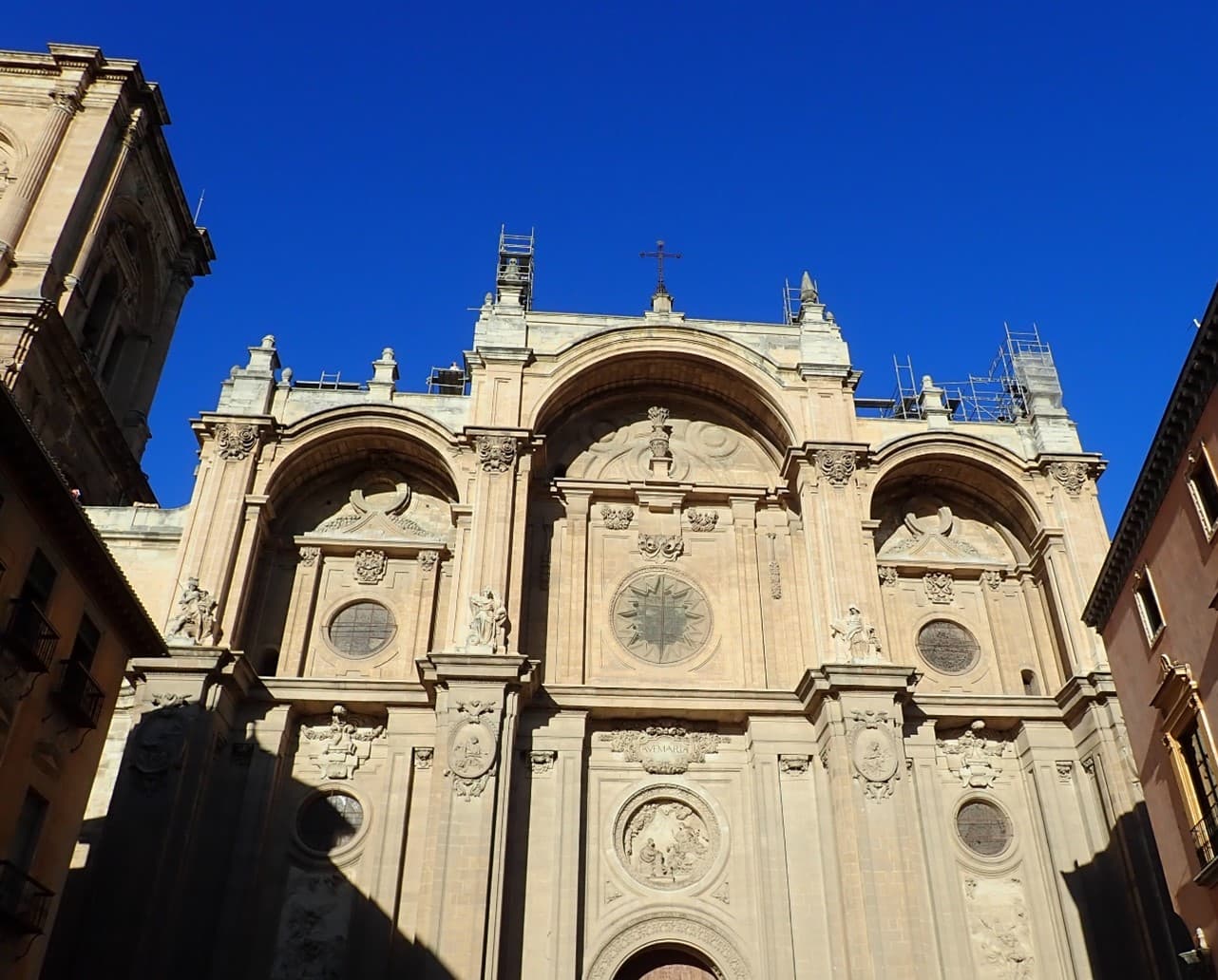
Figure 8. Granada Cathedral. Auxiliary emergency measures, removal of ornamental elements from the façade.
Assessing the damage to these assets requires determining actual prices, since the usual price tables used for other types of risk do not ordinarily cover the necessary repair work. Costs are higher, because special procedures, basic materials, and high-quality veneers, large thicknesses, complicated auxiliary means, expert workmanship (craftsmen who specialise in restoring architectural components) are required.
Consolidation and restoration plans drawn up by specialists in historical heritage and restorers became available for repairs to both the St. Patrick’s Church and the Parish Church of the Incarnation several months later, a quite reasonable time given the complexity of the tasks. These plans set out the work to be performed and execution methods, itemised with unit prices. With this, we were able to review all the documented damage, identify which items were indemnifiable, check measurements, and verify the unit prices used and thereby adjust the initial valuation made using data collected on site based on estimated prices for the work.
In both cases the plans included work to repair pre-existing defects, such as fixing capillary moisture, cracks from settling and even from earlier earthquakes, removing vegetation from the upper portions, etc. The valuation separated out this work, which was not included.
The final compensation was calculated after the damage appraisal had been completed based on the policy and the Extraordinary Risk Insurance Regulations, taking into account such basic aspects as covers, exclusions, and policy sublimits. Also taken into account was the extent of insurance coverage for the building, in case the rule of proportional insurance applied (7).
Properly insuring historical buildings is no simple matter. It is difficult to assign a monetary value to something usually considered to be of incalculable worth in sentimental, historical, and cultural terms, and valuation in terms of construction is also not easy, since many traditional building methods have been lost and cannot be duplicated today.
Even considering that current technology allows us to produce a 3D image from which to calculate the volume of stone and other materials needed, the labour of specialised quarrymen to dress and install each stone is hard to quantify, since this work has been developed over the centuries, not to mention the work of the craftsmen needed to produce all the ornamentation (sculptures, relief, tracery, stained glass windows, etc.), many of whose trades have almost ceased to exist.
We would doubtless have an easier time calculating the value of one of Egypt's pyramids than the value of one of the cathedrals in Spain!
This being the case, it is easy to see that if the total value were taken as the sum insured, it would be extremely high, even inordinate, and the premiums would be unaffordable.
As a rule, what we tend to find is full value insurance with insufficient sums insured and hence subject to the rule of proportional insurance or first risk insurance (8) for very small sums. In either case, if the valuation is for the actual value and the damage is severe and thus considerable, compensation is far below the cost of the damage.
In certain extreme cases we have even encountered first risk insurance that was so low that it did not cover even 40% of the cost of just the emergency work, namely, data collection, monitoring the damage, shoring, removal of elements at risk of falling, safety protection, and auxiliary means, with compensation, after deducting the excess, coming to less than 5% of the cost of full repair.
Loss adjusting for these Spanish cultural heritage assets is extremely demanding in the strict sense, because it is painstaking and requires large amounts of time and effort, but at the same time it is to us a not unenjoyable endeavour.
The experience gathered can be summarised in that the assessment tasks requires a much singular and detailed work that, unfortunately, does not reflect in enough indemnification for the complete repair of losses as the contracted insured values are usually insufficient.
We thank the CCS for the opportunity we are given to take part in these valuations and for enabling us to share some of our experiences in this article, which we hope readers will enjoy.
The first inspection visit is usually held in the company of the insured's agent and specialists the insured has designated, who are generally involved in conservation, inasmuch as the insured is fully aware of the importance of the asset, and as responsible parties they try to help us in our assessment by providing us with an expert to work with. This first inspection will be followed by many others to collect data, both before any action is taken and while repairs are in progress.